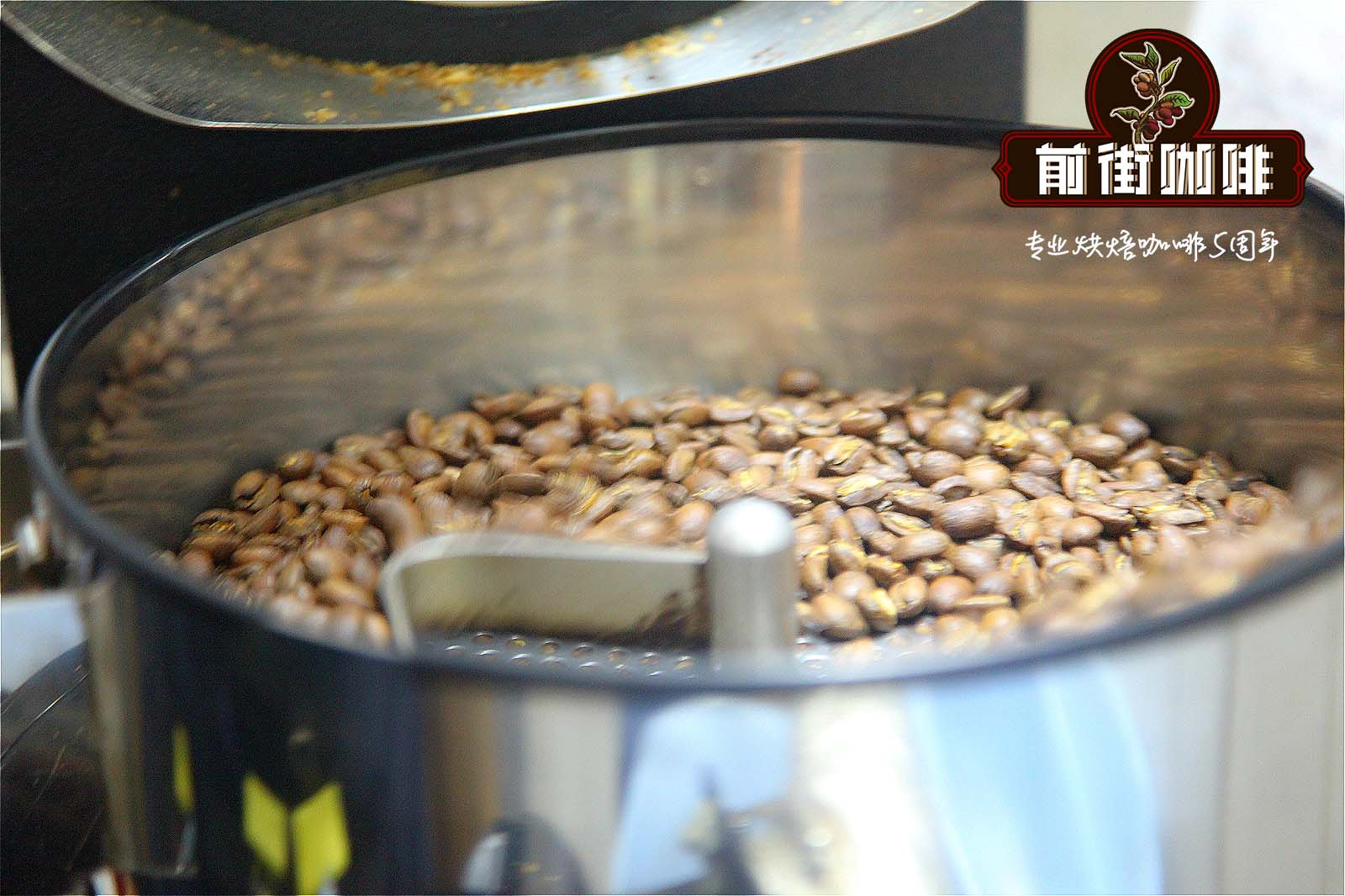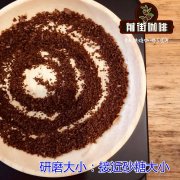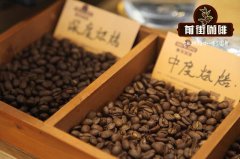Analysis of roasting of fully washed beans in Papua New Guinea Kimel. How to bake Papuan coffee beans?

Professional coffee knowledge exchange more coffee bean information please follow the coffee workshop (Wechat official account cafe_style)
Wahgi Valley Kimel
Fully Washed
Located in the town of Banz, near the Mount Hagen Mountains in Papua New Guinea, Kimel has a long history of producing high-quality island coffee, and this coffee is no exception.
This is a great PNG Papua New Guinea coffee with the grapefruit flavor of Kenyan coffee and has a wide range of applications in roasting. There is a delicate hibiscus fragrance in shallow baking, slightly lengthening the baking time will produce brown sugar sweetness and will not damage the citrus flavor of the coffee.
Papua New Guinea includes the eastern half of New Guinea (the western half is part of Indonesia). Commercial coffee production officially began in the region in the late 1920s and is now the country's second largest agricultural export after palm oil.
Although coffee is grown mainly by small farmers, Kimel Manor was founded in 1974 by an Australian named Bobby Gibbs. In 1979, Kishan Pau and Pup Kaki bought the farm and became a model of cooperation among local indigenous tribal groups.
Kimel Manor is now 100% owned by local aborigines. The manor has more than 400 permanent employees and provides housing, fresh water, school and medical services. During the on-site processing of coffee cherries, the manor uses environmentally friendly methods to divert water from the nearby Kimel River to process coffee cherries, and plant Grevalia and Albizia trees to provide shade for coffee.
Raw bean analysis by Chris Kornman
The size of this Papua New Guinea coffee bean is very large, with 18 + accounting for 90%. This AA coffee is extremely dense and its moisture content is above average, which indicates that this coffee is likely to have bright acidity and caramel sweetness.
The variety of this coffee is a real "hodgepodge", with Typica varieties appearing in two forms (Asian native species heirloom Asian and Western Hemisphere Blue Mountain species Blue Mountain), including Mundo Novo varieties (a cross of Bourbon-Typica), and Caturra varieties, Catimor varieties (excellent varieties resistant to disease and leaf rust).
Ikawa baking analysis by Chris Kornman
This week, I changed the airflow setting of Ikawa slightly to the new firmware firmware v. 23. I would like to try a new baking curve, hoping to show the bright, juicy characteristics of this Papua New Guinea coffee.
(blue curve) the first baking burst was a little later than expected and lasted about 20 seconds before it ended. However, this coffee can withstand the test of strong airflow, with rich grapefruit, rich citric acid flavor and complexity similar to Kenyan coffee.
In the second baking (red curve), I extended the Maillard reaction phase by about 30 seconds, maintaining a similar airflow, but extended the baking development stage after an explosion to 50 seconds. Compared with the first roast, the coffee is much more chocolate and slightly less acidic, but leaves lemon, blackcurrant and floral aromas.
In the cup test, each cup tester has some personal preferences, but the cup test scores of this coffee are quite consistent. This shows that no matter what small changes in the baking curve, this coffee will maintain its flavor characteristics.
Probatino baking analysis by Jen Apodaca
This is one of the many varieties of coffee in Papua New Guinea, which sometimes tastes like Kenya. In order to show the acidity in the coffee, I decided to use the lower bean temperature of 390 degrees Fahrenheit and increase the heat energy after the temperature return point, which quickly reached the yellowing point at high heat, and Maillard reaction began. I reduced the heat by 1/4 to prolong the Maillard reaction and postpone the explosion.
The blast temperature is 393.2 degrees Fahrenheit, slightly below the average temperature. At this point, I have enough heat to push the baking to continue, the development time is 1:27 minutes, and the bean temperature is 405.6 degrees Fahrenheit.
In the cup test, this coffee is very bright and fruity, but there is also some roasty at the back end. If I want to bake again, I will first reduce some calories, then lengthen a little longer in the dehydration stage and Maillard stage, at the same time reduce the development time after the explosion, and the bean temperature remains the same. In the chart below, you can see that the RoR begins to drop before the explosion and the amount of heat applied is not reduced. In order to prolong this phase and maintain RoR, I will adjust the heat energy at 3:15 in advance to maintain a relatively high heat energy.
Although this coffee looks a bit roasty to me, there is no doubt that it has a lovely classic Kenyan flavor, blackcurrant and pink grapefruit, and tastes like syrup.
Quest baking analysis by Evan Gilman
For this baking, I used two temperature probes: one for ambient temperature (ET) Omega TJ36-ICSS-18U-6-SB, and the other for bean temperature, which is Uxcell a12031600ux0143. I also used a yocto thermocouple, a small device that can transmit the temperature information of the probe to my computer. I also used Raspberry Pi 3 Model B.
I started baking with a standard setting: thermal energy (current value) 9A, the back cover opened to block airflow, and the ambient temperature (ET) probe showed that the temperature of the bean was 347F.
This coffee has a high moisture content, so I think I should increase the heat energy. @ 2GRV 35amp 212F closes the rear of the roaster (when you start to see steam coming from the top pipe). @ 4PUR 30max 270F, with the start of yellowing, I increased the fan speed to 3pm 6RV 30max 315F, and I reduced the heat energy (current value) to 7.5A. At this time, I waited patiently to observe the temperature.
@ 9Drex 45hand 365F, I increased the speed of the fan to 6. The first explosion occurred at 11VOR 15ram 379F, the temperature of the explosion was slightly lower and the time was later than I expected. The development time of baking is 1:05, and the bean is produced at 1215, 20 and 385F. The explosion of this coffee is not very strong, and there is not much silver skin removed during baking.
Although it takes a long time to bake, this coffee is still very good. As a drip filter, the cup test team almost unanimously felt the air ducts of brown sugar, lemon, pineapple and mango. This is a lively and sweet coffee.
Brewing analysis by Sandra Elisa Loofbourow
This week, Wahgi Valley coffee in Papua New Guinea really surprised me. In the cup test, it has incredible cleanliness, acidity and rich tropical fruit flavors. I'm really excited to taste its performance in normal cooking. I used to use smart cups to brew coffee from this producing area, so this time I also use smart cups.
The gouache ratio starts at 1:15 (13g coffee and 200g brewing water). Pour all the brewing water into the smart cup as quickly as possible, then stir quickly, @ 00:45 and stir again for 10 seconds. @ the last stirring at 1:30 (10 seconds), open and leak and filter for about one minute.
There are common tropical fruit flavors such as pineapple, mango and litchi, as well as more obvious flavors such as vanilla and cocoa powder. However, on the whole, the flavor is mild and low-key, and I suspect there is a problem of insufficient extraction (tests show that TDS is only 1.28). According to the standard adjustment procedure, I increased the fineness of the grinding, and then cooked it again according to the same procedure. The increase of gouache contact surface area (finer grinding) should lead to a higher extraction rate, but my TDS only slightly increased to 1.29.
I felt depressed about the Smart Cup, so I turned to V60. Because my goal is to improve the extraction rate, I set EK to 7.5 (when I use V60s, EK is usually set to 8). These adjustments lead to very aggressive extraction, with the taste of limes, ginger and chocolate in the coffee, as well as the squeeze and astringency of excessive extraction.
Again!
I roughed up the grind (8.5/EK 43) and I tasted pineapples, peaches, dates, mangoes, lime leaves and brown sugar-the best variety of coffee we've tasted so far. The TDS reading is exactly the same as before! In terms of the extraction rate and the total amount of dissolved solids, the flavor of this cooking is rich, full, sweet, balanced and completely different from the previous cooking.
So I have to learn this lesson again: the TDS densitometer is just a tool, and we should focus on the quality and flavor of the coffee in the cup, not to measure the numbers. This Kimel Manor Coffee, like Kenyan coffee, has the taste of natural fruit, a good reminder that the core of boutique coffee is always delicious.
END
Important Notice :
前街咖啡 FrontStreet Coffee has moved to new addredd:
FrontStreet Coffee Address: 315,Donghua East Road,GuangZhou
Tel:020 38364473
- Prev

Costa Rican Carnett dried grape honey treatment of cranberry coffee introduction of small yellow flower innovative honey treatment
Professional coffee knowledge exchange more coffee bean information please follow Coffee Workshop (Wechat official account cafe_style) Costa Rican Coffee Manor-Carnett Yellow Flower innovative Honey treatment Series CANET Manor is located in the highest altitude area of Costa Rican Tarrazu coffee cultivation. This area is the most intensive area of fruit cultivation in Costa Rica, and the main manor is to grow passion fruit.
- Next

Is PNG Island Coffee Bean an Iron truck Variety? Kigabah Manor, Papua New Guinea
For more information on coffee beans, please follow the coffee workshop (Wechat official account cafe_style). These Papua New Guinea coffee beans come from Kigabah Manor, located in Banz in the western highlands.
Related
- Detailed explanation of Jadeite planting Land in Panamanian Jadeite Manor introduction to the grading system of Jadeite competitive bidding, Red bid, Green bid and Rose Summer
- Story of Coffee planting in Brenka region of Costa Rica Stonehenge Manor anaerobic heavy honey treatment of flavor mouth
- What's on the barrel of Blue Mountain Coffee beans?
- Can American coffee also pull flowers? How to use hot American style to pull out a good-looking pattern?
- Can you make a cold extract with coffee beans? What is the right proportion for cold-extracted coffee formula?
- Indonesian PWN Gold Mandrine Coffee Origin Features Flavor How to Chong? Mandolin coffee is American.
- A brief introduction to the flavor characteristics of Brazilian yellow bourbon coffee beans
- What is the effect of different water quality on the flavor of cold-extracted coffee? What kind of water is best for brewing coffee?
- Why do you think of Rose Summer whenever you mention Panamanian coffee?
- Introduction to the characteristics of authentic blue mountain coffee bean producing areas? What is the CIB Coffee Authority in Jamaica?

